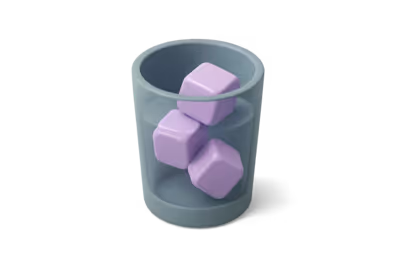Laws of Thermodynamics
Zeroth Law of Thermodynamics
If two systems are in thermal equilibrium with a third system, then they are in thermal equilibrium with each other.
First Law of Thermodynamics
where,
- : Change in internal energy
- : Heat added to the system
- : Work done by the system
Second Law of Thermodynamics
In a reversible cycle, the heat absorbed is greater than the work done:
Third Law of Thermodynamics
As the temperature of a system approaches absolute zero, the entropy of a system reaches a constant minimum.
State Properties
Internal Energy
where,
- : Temperature
- : Volume
- : Number of moles
Enthalpy
where,
- : Enthalpy
- : Pressure
- : Volume
Entropy
- where,
- : Change in entropy
- : Reversible heat
- : Temperature
Inefficiency of Processes
where
- is the change in entropy. For reversible processes,
Entropy at Absolute Zero
Change in Entropy
where
- is the heat absorbed in a reversible process
Entropy in Isothermal Processes
Change in Entropy in an Ideal Gas
Thermodynamic Processes
Isothermal Process
Work Done in an Isothermal Process
Isochoric Process
where,
Isobaric Process
where,
- : Heat capacity at constant pressure
Adiabatic Process
where,
For an ideal gas:
Thermal Equilibrium
Condition for Thermal Equilibrium
whereis the heat entering the system andis the heat leaving.
State Equations
Ideal Gas State Equation
where:
Internal Energy of an Ideal Gas
where:
- = number of moles
- = heat capacity at constant volume (J/(mol·K))
- = temperature (K)
Van der Waals Equation
where:
- : Corrects the pressure
- : Corrects the volume
Work and Heat
Work
Work done by a system:
W = \int P , dV
W = nRT \ln \left( \frac{V_f}{V_i} \right)
Q = nC_v \Delta T
Q = nC_p \Delta T
Q = nC_p\Delta T
C_p - C_v = R
\eta = 1 - \frac{T_C}{T_H}
Q_H = n R T_H \ln\left(\frac{V_B}{V_A}\right)
Q_C = n R T_C \ln\left(\frac{V_D}{V_C}\right)
W = Q_H - Q_C
W = n R \left(T_H \ln\left(\frac{V_B}{V_A}\right) - T_C \ln\left(\frac{V_D}{V_C}\right)\right)
V_B T_H^{\gamma-1} = V_A T_C^{\gamma-1}
W = \eta Q_H
\Delta S_H = \frac{Q_H}{T_H}
\Delta S_C = \frac{Q_C}{T_C}
\frac{Q_H}{T_H} = \frac{Q_C}{T_C}
COP_{\text{ref}} = \frac{Q_C}{W} = \frac{T_C}{T_H - T_C}
COP_{\text{cal}} = \frac{Q_H}{W} = \frac{T_H}{T_H - T_C}
\eta = \frac{W_{\text{net}}}{Q_H} = \frac{W_{\text{turbine}} - W_{\text{pump}}}{Q_H}
W_{\text{turbine}} = h_1 - h_2
W_{\text{pump}} = h_4 - h_3
Q_H = h_1 - h_4
Q_C = h_2 - h_3
\Delta S_{\text{turbine}} = s_2 - s_1
\Delta S_{\text{pump}} = s_4 - s_3
\eta = 1 - \frac{Q_C}{Q_H}
\eta_{\text{real}} \approx \eta_{\text{ideal}} - \text{losses}
W_{\text{net}} = W_{\text{turbine}} - W_{\text{pump}} = (h_1 - h_2) - (h_4 - h_3)
COP = \frac{Q_H}{W_{\text{net}}}
\eta_{Otto} = 1 - \frac{1}{r^{\gamma-1}}
\eta_{Diesel} = 1 - \frac{1}{r^{\gamma-1}} \cdot \frac{\alpha^\gamma - 1}{\alpha (\gamma - 1)}
W_{Otto} = Q_{in} - Q_{out} = \frac{C_V (T_2 - T_1)}{1 - r^{1-\gamma}}
W_{Diesel} = Q_{in} - Q_{out} = C_V (T_3 - T_2) - C_V (T_4 - T_3)
Q_{in} = m \cdot C_V (T_2 - T_1)
Q_{in} = m \cdot C_P (T_3 - T_2)
\frac{T_2}{T_1} = r^{\gamma - 1}
\frac{T_3}{T_2} = \frac{T_1}{T_4}
\frac{T_2}{T_1} = r^{\gamma - 1}
\frac{T_4}{T_3} = \frac{1}{\alpha^{\gamma - 1}}
PV = nRT
PV = nRT
PV^\gamma = \text{constant}
PV = nRT
COP = \frac{Q_{in}}{W_{neto}}
COP = \frac{Q_{evaporator}}{W_{compressor}}

